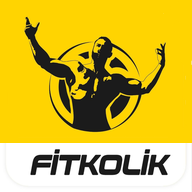For athletes, high-intensity training, constant contact with equipment, and excessive sweating are routine parts of life—but they also create a perfect storm for skin issues, particularly acne. Managing acne for an active individual requires more than a simple over-the-counter wash; it demands a strategic, prescription-level approach. Among the most effective pharmaceutical weapons are tretinoin (a retinoid) and benzoyl peroxide (BPO), yet combining them requires a calculated game plan to maintain maximum efficacy.
The Unique Skin Challenge of the Athlete
Acne in athletes is often compounded by several factors beyond typical hormonal changes:
-
Acne Mechanica: This is friction-induced acne, common in areas where gear rubs the skin (forehead under helmets, shoulders under pads, back under tight uniforms). The physical pressure and friction trap sweat and bacteria, leading to breakouts.
-
Excessive Sweat and Occlusion: Prolonged periods of sweating combined with clothing or equipment create a moist, warm environment—an ideal breeding ground for the P. acnes bacteria. This is often seen as "bacne" (back acne) or chest breakouts.
-
Sun Exposure: Outdoor athletes face sun damage, which can worsen inflammation and, paradoxically, dry out the skin initially, leading to increased oil production and subsequent breakouts.
Tretinoin and Benzoyl Peroxide: A High-Powered Duo
Tretinoin (a prescription-strength derivative of Vitamin A) works by accelerating skin cell turnover, effectively clearing pores, preventing new clogs, and even improving the appearance of acne scars. It is a cornerstone of long-term acne management.
Benzoyl Peroxide (BPO), on the other hand, is a potent antimicrobial agent that quickly reduces acne-causing bacteria and helps shed dead skin cells.
While incredibly effective together, these two products traditionally present a chemical incompatibility challenge. Tretinoin is susceptible to oxidation and deactivation when mixed directly with BPO. For an athlete relying on the full strength of their prescribed treatment, this deactivation can mean the difference between clear skin and a frustrating flare-up that impacts confidence and comfort during competition.
The Athlete's Skincare Schedule: Timing is Everything
To circumvent the chemical deactivation and maximize the anti-acne power of both treatments, the application must be carefully staggered. This becomes a crucial part of the athlete's daily routine, as non-adherence can compromise results:
-
Morning Routine: The athlete should apply Benzoyl Peroxide (often in a wash or a targeted application) after their post-workout shower. BPO is effective as a quick-acting antibacterial agent and can be used to treat areas immediately affected by sweat and gear.
-
Evening Routine: Tretinoin should be applied to clean, dry skin well before bedtime. Applying it at night reduces its photosensitivity risk and ensures a long period for the retinoid to work on cell turnover without interference.
By creating a time-separated schedule, athletes can harness the pore-clearing power of tretinoin at night and the potent antibacterial effects of BPO during the day (or vice versa, depending on the dermatologist's plan), ensuring both ingredients remain stable and active.
Beyond Topicals: The Athlete's Holistic Skincare Defense
Effective acne management for an athlete must also incorporate preventative hygiene and gear maintenance to support the topical medications:
-
Immediate Post-Activity Cleansing: Showering or using cleansing wipes immediately after practice or competition is non-negotiable to remove sweat, dirt, and bacteria before they clog pores.
-
Equipment Hygiene: Regularly washing or wiping down protective gear (helmets, pads, mouthguards) with antibacterial solutions is essential to reduce the transfer of bacteria and oil to the skin.
-
Protective Wear: Opting for moisture-wicking, breathable fabrics over cotton reduces skin occlusion and keeps the surface drier. Using lightweight, non-comedogenic sunscreens is vital for outdoor training, especially when using tretinoin, which increases sun sensitivity.
For the dedicated athlete, clear skin is not a matter of vanity—it is a component of overall physical health that reduces the risk of infection and maintains focus and confidence. By treating their skincare regimen with the same discipline applied to their training, and strategically managing powerful combination therapies like tretinoin and benzoyl peroxide, athletes can keep their skin in peak condition.

